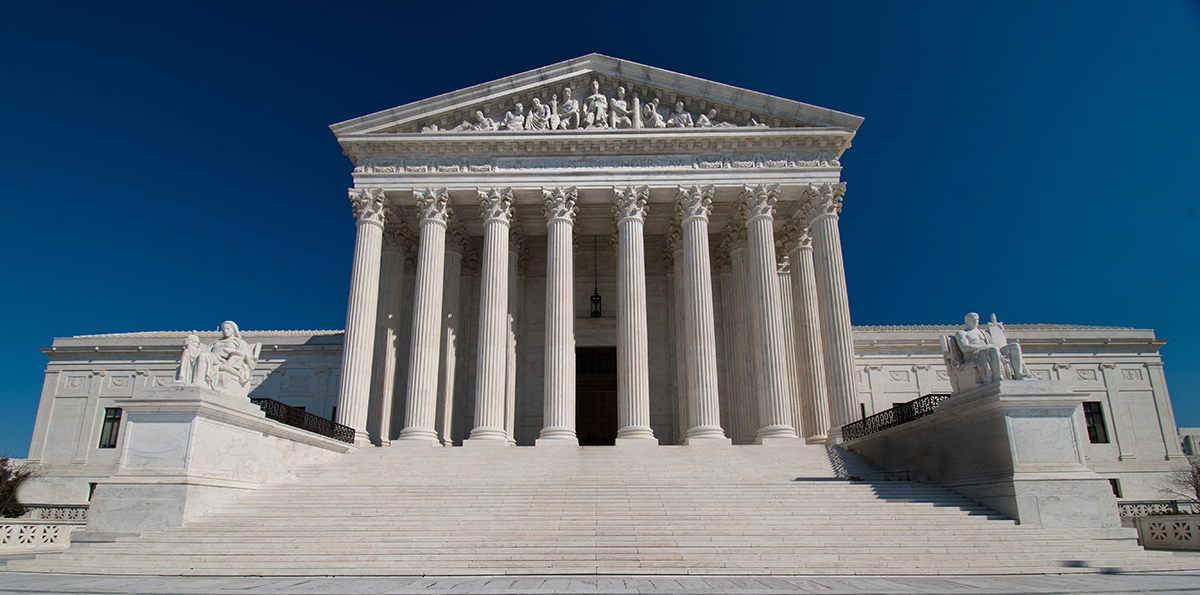Supreme Court Stays Vaccine Mandate for Large Employers

On January 13, 2022, the United States Supreme Court stayed the vaccine mandate requiring all employers with 100 or more employees to ensure that their employees are vaccinated against COVID-19. The highly anticipated ruling came after the Fifth Circuit Court of Appeals stayed enforcement of the mandate and the Sixth Circuit Court of Appeals then lifted the stay, requiring so-called “large” employers to comply with the mandate or face significant penalties. The Supreme Court’s opinion continued the stay, eviscerating the mandate.
The Supreme Court found that the Department of Labor’s Occupational Safety and Health Administration (“OSHA”) exceeded its statutory authority by issuing Emergency Temporary Standards (“ETS”) that imposed the vaccine mandate. The Court looked at the stated purpose of the Occupational Safety and Health Act, the statute that gave birth to OSHA. The Act’s purposes was to ensure “safe and healthful working conditions” by enforcing health and safety standards that are “reasonably necessary or appropriate to provide safe or healthful employment.”
Although OSHA has the right to issue ETSs without the usual notice and comment period, such action is permissible, in the words of the Supreme Court, only in the “narrowest of circumstances”. Under those circumstances, the Secretary of Labor must show “that employees are exposed to grave danger from exposure to substances or agents determined to be toxic or physically harmful or from new hazards,” and that the “emergency standard is necessary to protect employees from such danger.” Notably, prior to the COVID-19 mandate, the Secretary had used this power just 9 times and after legal challenges, only one of those was upheld in full. Not a great track record.
The Court likened the vaccine mandate to a “blunt instrument”, making no distinction based on industry or risk of exposure. Under OSHA’s logic, lifeguards and landscapers faced the same vaccination or testing requirements as medics and meatpackers, though their exposure to other persons and length of time spent outdoors varied tremendously. OSHA estimated that 84 million workers would be impacted by the mandate, making the mandate, in the Supreme Court’s opinion, no “everyday exercise of federal power.”
Underlying the Court’s ruling that OSHA exceeded its authority was the reasoning that OSHA sets “workplace safety standards, not broad public health measures”. In the Court’s own words:
Although COVID–19 is a risk that occurs in many workplaces, it is not an occupational hazard in most. COVID–19 can and does spread at home, in schools, during sporting events, and everywhere else that people gather. That kind of universal risk is no different from the day-to-day dangers that all face from crime, air pollution, or any number of communicable diseases. Permitting OSHA to regulate the hazards of daily life—simply because most Americans have jobs and face those same risks while on the clock—would significantly expand OSHA’s regulatory authority without clear congressional authorization.
The Court left open the possibility that OSHA could impose COVID-19 requirements that are targeted to workplaces or jobs where the virus “poses a special danger”. It gave examples of a researcher performing work on the COVID-19 virus or working in an “especially” crowded environment. It is unclear whether OSHA will attempt to regulate specific industries by imposing vaccine mandates. Any additional mandate would likely encounter as many legal challenges as the employer mandate faced.
In its parting comment, the Court did not mince any words, stating:
Although Congress has indisputably given OSHA the power to regulate occupational dangers, it has not given that agency the power to regulate public health more broadly. Requiring the vaccination of 84 million Americans, selected simply because they work for employers with more than 100 employees, certainly falls in the latter category.
The OSHA employer mandate is only one of several mandates issued by agencies of the Federal government. It is advisable to confer with your human resources specialist and employment attorney about how the Court’s opinion impacts your workplace and other mandates that may affect your business. The attorneys in our Austin and Dallas office are available to consult with you on OSHA requirements, compliance, eligibility of the requirements, and/or a review of your company’s COVID-19 protocol. You may contact us at info@gstexlaw.com.
Legal Disclaimers
This blog is made available by Gerstle Snelson, LLP for educational purposes and to provide general information about the law, only. Neither this document nor the information contained in it is intended to constitute legal advice on any specific matter or of a general nature. Use of the blog does not create an attorney-client relationship with Gerstle Snelson, LLP where one does not already exist with the firm. This blog should not be used a substitute for competent legal advice from a licensed attorney.
©Gerstle Snelson, LLP 2022. All rights reserved. Any unauthorized reprint or use of this material is prohibited. No part of this blog may be reproduced or transmitted in any form or by any means, electronic or mechanical, including photocopying, recording, or by any information storage or retrieval system without the express written permission of Gerstle Snelson, LLP.

